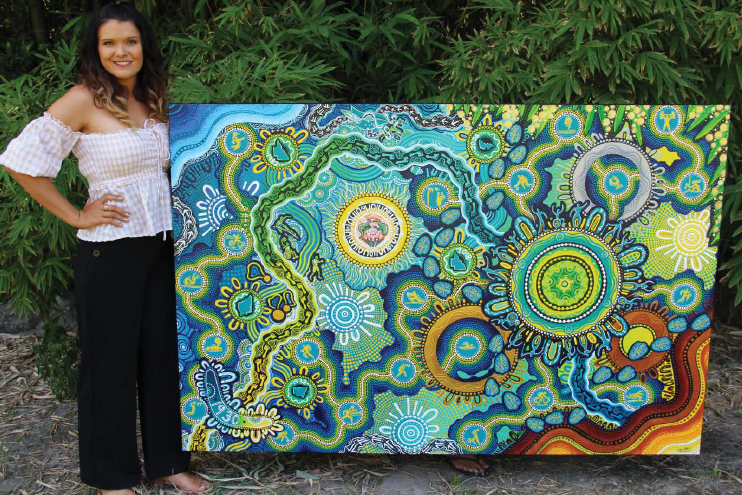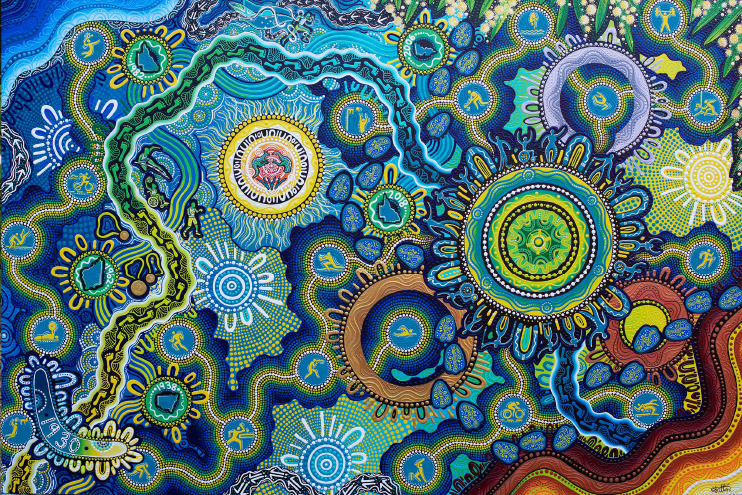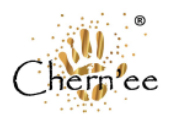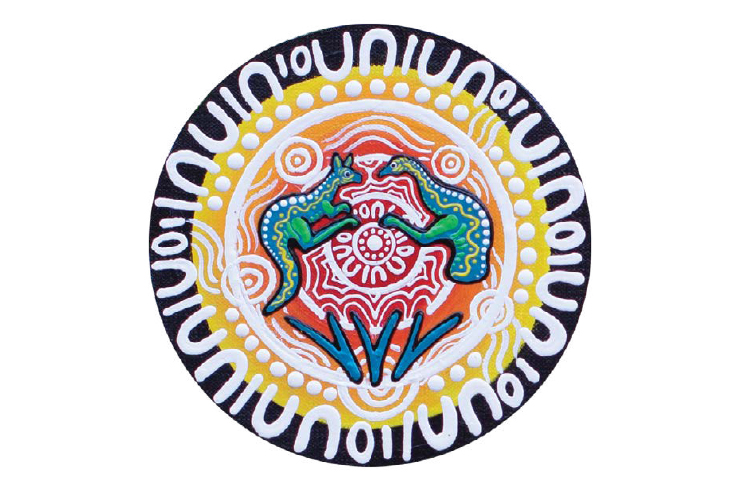
*Content Warning: Aboriginal and Torres Strait Islander readers are warned that the following article contains links to images of deceased persons.
Commonwealth Games Australia is honoured to showcase artwork by Chern’ee Sutton that represents Commonwealth Games Australia’s reconciliation journey.
Chern’ee Sutton, a contemporary indigenous artist from the Kalkadoon people of Mt Isa, Queensland, has created a stunning artwork to represent Commonwealth Games Australia’s reconciliation journey.
Sutton was an artist in residence at the Athletes’ Village on the Gold Coast and drew the markings on the hands and feet of 2018 Games mascot Borobi. This is her story on the CGA’s artwork.

In my painting, the footprints represent Australia’s Commonwealth Games journey and a timeline starting at the bottom left corner in 1930 which was the first year that Australia competed at the Commonwealth Games. The boomerang commences Australia’s journey, starting at the Empire Games in Hamilton in 1930 and also represents the Australian Team returning every four years to participate in the Games.
The first community symbol along the timeline represents the Empire Games hosted in Sydney in 1938, each of the smaller community symbols contains the Australian State in which the Games were held. The next small community symbol represents the Perth Empire and Commonwealth Games in 1962 and the travelling lines represent the Australian athletes travelling around the world to compete in the Games.
The silhouetted medals and athletes around the footprints represent a major part of Australian Commonwealth Games history when boxer Jeffery ‘Mitta’ Dynevor and high jumper Percy Hobson were the first Aboriginal and Torres Strait Islander athletes to win Commonwealth Games gold medals in Perth in 1962. The wheelchair athlete represents our first appearance at the Commonwealth Paraplegic Games and also our first Para-sport athlete, Ray Barrett, who competed in athletics and wheelchair basketball at the 1970 Commonwealth Paraplegic Games in Edinburgh, Scotland.
The next community symbol is the Brisbane Games in 1982 and the next silhouette represents Cathy Freeman OAM carrying both the Aboriginal and Australian flags after her 400m gold medal win in Victoria, Canada in 1994, sparking a national conversation about racism, which is also represented through the Kangaroo and emu footprints, as they can only move forwards never backwards.
The Melbourne 2006 Commonwealth Games is the next community symbol and the final community symbol with the state of Queensland in the centre represents the Gold Coast 2018 Commonwealth Games.
The footprints lead into the large Community Symbol, which represents the Australian Commonwealth Games team, the Athletes and Para-athletes who compete in the Games. The footprints then continue into the future and onto the next Commonwealth Games.
The water holes and rivers in the top left corner, the leaves in the top right corner and the mountains and sand dunes represents the many diverse areas and landscapes the athletes call home, from the rivers and coasts to the rainforests and bush, to the desert and outback.
The people around the large community symbol represents the Australian Commonwealth team and symbolises the many diverse athletes and Para-athletes who make up the team.
The centrepiece of this community symbol is the Unity symbol, a legacy of the Gold Coast Games RAP, which represents a team that is unified and ‘Greater Together’.
The three circles around the large community symbol represents the medals which the athletes compete, train and fight to win – gold, silver and bronze.
The blue and aqua footprints represent Borobi whose footprints leave a story engrained into the earth everywhere Borobi travels. Borobi is now a major part of the Australian Commonwealth Games team since his debut as the mascot for the Gold Coast 2018 Games.
The 21 sports icons connected by spirit trails and surrounded by dots represents the many different sports which will be a part of the Birmingham 2022 Commonwealth Games, with athletes from all around the Commonwealth competing in these sports to win gold. The dots surrounding the icons represent the many spectators and supporters from every corner of the globe who will watch and support their athletes in their chosen sports, both at the Games and from afar.
The four large, yellow and aqua dotted circles with white community symbols in the centre represent the Australian Commonwealth Games values, which are an integral part of the Games, these values are Inclusiveness, Respect, Integrity and Excellence.
Finally, the sun in the centre of the artwork represents ‘pursuing sporting excellence’ and ‘connecting with communities’, the two strategic objectives of Commonwealth Games Australia, as the sun provides a brighter future for the athletes and their communities.
The centre of the sun is a stylised Commonwealth Games Australia logo with the kangaroo and emu along with the Commonwealth Sport ‘celebration’ mark representing sport, athletes and the Commonwealth of which we are part of as well as the fact that we are always moving forwards, just like the kangaroo and emu.


